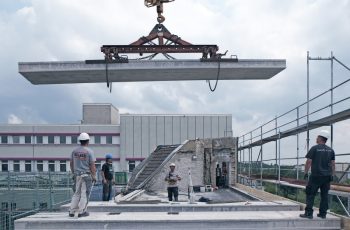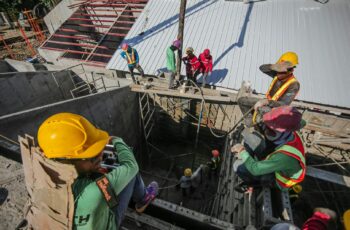Choosing the right foundation is crucial for any construction project, and for slab-on-grade homes, the slab house foundation is a popular and often cost-effective choice. This guide will explore the ins and outs of slab foundations, helping you understand their benefits, drawbacks, and suitability for your project.
What is a Slab House Foundation?
A slab house foundation is a type of foundation where the floor slab is poured directly onto the ground. Unlike basements or crawl spaces, there’s no gap between the ground and the living space. This monolithic structure integrates the foundation and the floor into a single unit. 
Advantages of Slab Foundations
Slab foundations offer several advantages. They are typically faster and less expensive to build than basements or crawl spaces. They also provide a level, stable base for the house, and are less susceptible to damage from earthquakes. Furthermore, the construction process is simpler, meaning less disruption and potential cost savings. Learn more about the cost savings here.
Disadvantages of Slab Foundations
While slab foundations are advantageous, they also have limitations. Moisture control is crucial, and improper installation can lead to issues with dampness or even mold growth. Repairing damage to a slab foundation can be challenging and expensive. Additionally, adding utilities like plumbing and electrical can sometimes be more complex compared to other foundation types. [IMAGE_2_HERE]
Slab Foundation Construction Process
The construction process involves excavating the ground, preparing the sub-base, and installing vapor barriers and insulation. Reinforcement is then placed within the forms before the concrete is poured and finished. Check out this video on the construction process. This step is crucial for creating a solid and durable base for your home. Proper compaction of the soil is essential to prevent settling. [IMAGE_3_HERE]
Considerations for Soil Conditions
The suitability of a slab foundation depends heavily on soil conditions. Expansive soils, which can swell and shrink with moisture changes, present significant challenges. Proper soil testing is crucial to determine the best approach. In some cases, specialized techniques may be required to mitigate risks associated with problematic soils. Read more about soil testing here.
Insulation and Moisture Control
Effective insulation and moisture control are vital to prevent issues with temperature fluctuations and potential moisture damage. Proper vapor barriers are critical in preventing moisture from entering the slab. Choosing the correct insulation materials will help to maintain a comfortable and energy-efficient living space. [IMAGE_4_HERE]
Plumbing and Electrical Considerations
Planning for plumbing and electrical systems requires careful coordination during the construction phase. Running pipes and wires within the slab requires specialized techniques and careful planning. Consider consulting with experienced professionals to ensure proper installation and to avoid potential future problems. Find qualified contractors here.
Choosing the Right Slab Foundation for Your Needs
The decision of whether a slab foundation is right for your home will depend on your budget, soil conditions, and overall project goals. Weighing the pros and cons carefully and consulting with professionals is key to making an informed decision. Explore different foundation types here.
In conclusion, understanding the nuances of slab house foundations is key to a successful construction project. Careful planning and execution, paying close attention to details such as soil conditions, moisture control and the proper installation of utilities, are crucial for the long-term durability and habitability of your home. [IMAGE_5_HERE]
Frequently Asked Questions
What are the long-term maintenance needs of a slab foundation? Regular inspections for cracks or settling and addressing any issues promptly will help to prevent more significant problems.
Can you add a basement to a house built on a slab foundation? Adding a basement to a house that was originally built on a slab is generally expensive and complex, often requiring significant structural modifications.
How do I handle potential moisture issues with a slab foundation? Implementing proper vapor barriers during construction and ensuring adequate drainage around the perimeter of the house are essential for moisture control. Learn more about moisture control techniques here.
Are slab foundations suitable for all climates? While slab foundations are widely used, their suitability can vary depending on the climate. In extremely cold climates, proper insulation is critical to prevent freezing and thawing damage.

